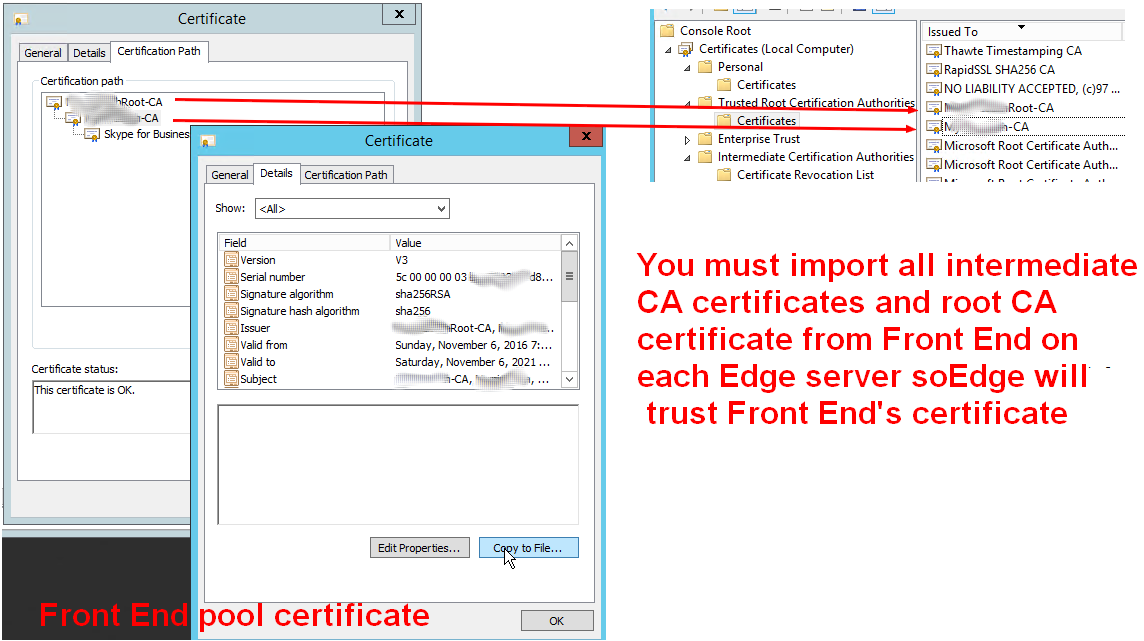 Here are the 7 audio quality metrics I think the most effective for analyzing Skype for Business audio quality and what numbers represent an audio quality issue.
Here are the 7 audio quality metrics I think the most effective for analyzing Skype for Business audio quality and what numbers represent an audio quality issue.
| Quality Metric | Key Notes | Thresholds |
| Avg. listening MOS | Mean Opinion Score (MOS) is the gold standard measurement to gauge the perceived audio quality (an algorithm calculates how a typical user would rate the voice quality).It is is an integer rating from 0 to 5. |
|
| Avg. round trip | Network Round Trip Time (RTT) is the most common measure of latency and is measured in ms.This measure is the average round trip time for RTP packets between endpoints.
When latency is high, users will likely hear the words, but there will be delays in sentences and words. |
For RTP packets as reported in the monitoring reports:
For basic UDP packets used by the ping command line:
|
| Avg. jitter | Jitter (ms) measures the variability of packet delay and results in a distorted or choppy audio experience. VoIP packets are sent at regular intervals from the sender to the receiver, but because of network latency the interval between packets can vary at the destination. Jitter can increase latency on networks. |
|
| Avg. packet loss rate | Packet Loss (%) represents the % of packets that did not make it to their destination.Packet loss will cause the audio to be distorted or missing (on the receiver end). |
|
| Avg. network MOS degradation | Average network MOS degradation is an integer represents the amount of the MOS value lost to network affects. |
|
| Avg. concealed samples ratio | Concealing audio samples is a technique used to deal with dropped network packets.Average concealed samples Ratio (%) is the % of packets that were concealed. |
|
| Bandwidth estimates (Kbps) | This is available bandwidth estimated on the client-side. |
|
Also there are:
Burst density that is the fraction of RTP (Real-Time Transport Protocol) data packets within burst periods since the beginning of reception that were either lost or discarded. A burst period is a period in which a high proportion of packets are either lost or discarded due to late arrival. Burst density is used in the call detail report.
and
Burst length – the mean duration, expressed in milliseconds, of the burst periods that have occurred since the beginning of reception. Burst length is used in the call detail report.
Basis to classify a call as poor in Skype for Business
The conditions we use to classify poor calls are shown in the 3 tables below. The poor call flag is set if one or more the conditions are met. Please note that a record in the MediaLine table can cover multiple media streams. The flagging occurs on the MediaLine level, so if you want to understand specifically which stream was the reason for the classification you need to look at the individual streams and use the columns in the tables below.
| Column in AudioStream Table | Condition | Explanation | |
| DegradationAvg | > 1.0 | Network MOS Degradation for the whole call. This metric shows the amount the Network MOS was reduced because of jitter and packet loss | |
| RoundTrip | > 500 | Round trip time | |
| PacketLossRate | > 0.1 | The packet loss rate | |
| JitterInterArrival | > 30 | Average network jitter | |
| RatioConcealedSamplesAvg | > 0.07 | Average ratio of concealed samples generated by audio healing to typical samples | |
| Column in VideoStream Table | Condition | Explanation |
| VideoPostFECPLR | > 0.1 | The packet loss rate after forward error correction has been applied |
| VideoLocalFrameLossPercentageAvg | > 10 | The percentage of total video frames that are lost |
| RecvFrameRateAverage | < 7 | Average video frame rate used by the receiver |
| LowFrameRateCallPercent | > 10 | Percentage of the call below the low frame rate threshold |
| VideoPacketLossRate | > 0.1 | The packet loss rate |
| InboundVideoFrameRateAvg | < 7 | The average video frame rate received during the call |
| OutboundVideoFrameRateAvg | < 7 | The average video frame rate sent during the call |
| DynamicCapabilityPercent | > 10 | Percentage of the call where the client experienced high CPU load when processing video |
| Column in AppSharingStream Table | Condition | Explanation |
| SpoiledTilePercentTotal | > 36 | This value is the percentage of the content from the sharer that did not reach the viewer. Content may be discarded (or spoiled) when the sharer discards tiles from the graphics source or the ASMCU tiles discards tiles from Sharer respectively. |
| RDPTileProcessingLatencyAverage | > 400 | Acceptable value of the average RDP tile processing latency in the AS Conferencing Server over the duration of the viewing session |
| RelativeOneWayAverage | > 1.75 | Optimal value for the relative one-way delay between the two media endpoints involved in the application sharing. This is a single-hop latency measure |






